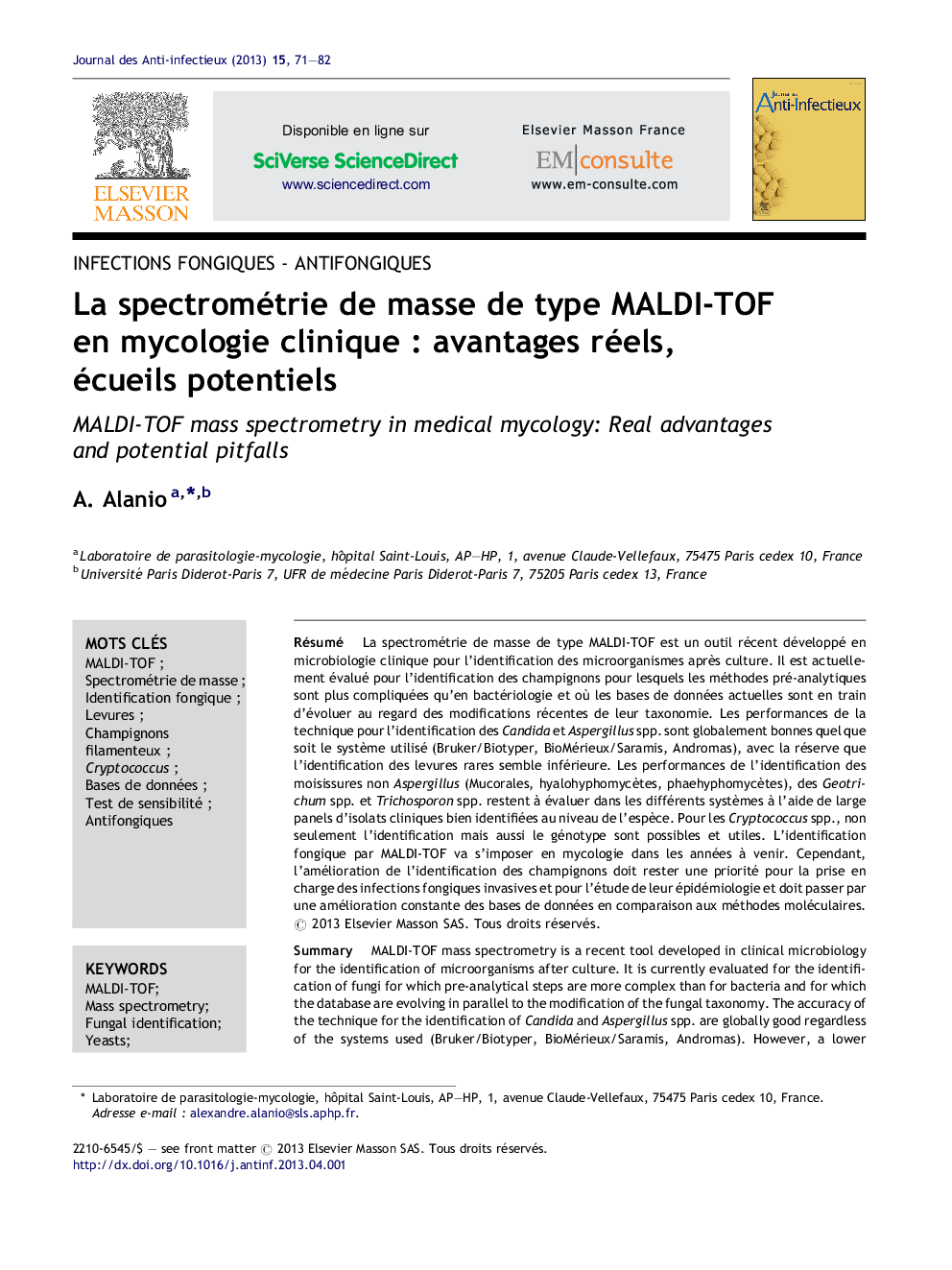| Article ID | Journal | Published Year | Pages | File Type |
|---|---|---|---|---|
| 3405347 | Journal des Anti-infectieux | 2013 | 12 Pages |
Abstract
MALDI-TOF mass spectrometry is a recent tool developed in clinical microbiology for the identification of microorganisms after culture. It is currently evaluated for the identification of fungi for which pre-analytical steps are more complex than for bacteria and for which the database are evolving in parallel to the modification of the fungal taxonomy. The accuracy of the technique for the identification of Candida and Aspergillus spp. are globally good regardless of the systems used (Bruker/Biotyper, BioMérieux/Saramis, Andromas). However, a lower accuracy is systematically observed for the identification of rare yeasts. The identification of non-Aspergillus molds (Mucorales, hyalohyphomycetes, phaehyphomycetes), Geotrichum spp. and Trichosporon spp. has to be tested on a large panel of clinical isolates well-identified at the species level. For Cryptococcus spp., identification and genotyping are possible and useful. MALDI-TOF mass spectrometry is going to replace classical identification tools in medical mycology within the next few years. However, a better fungal identification has to be a priority to improve the management of invasive fungal infections and to better study their epidemiology by constantly improving databases in comparison with molecular tools.
Keywords
Related Topics
Health Sciences
Medicine and Dentistry
Infectious Diseases
Authors
A. Alanio,
